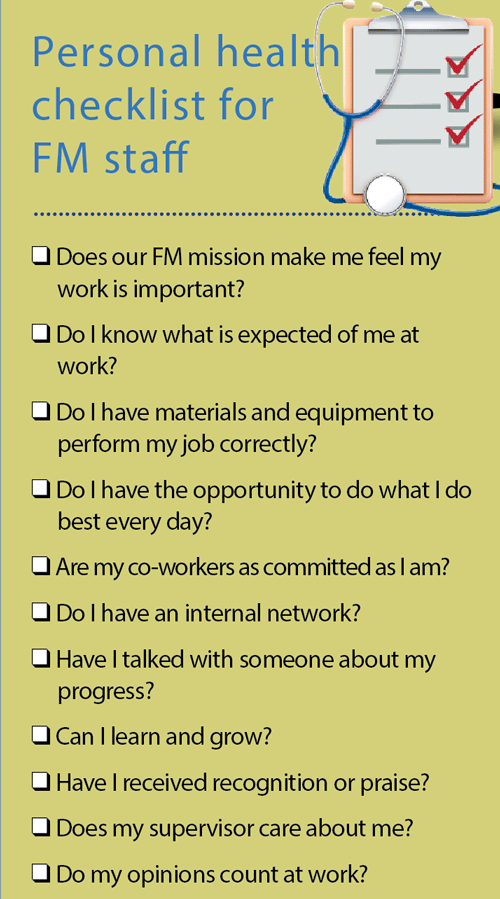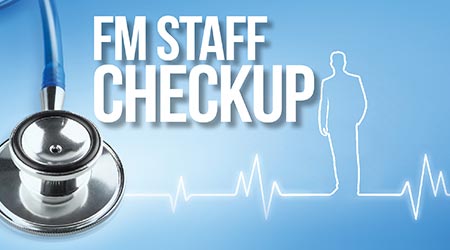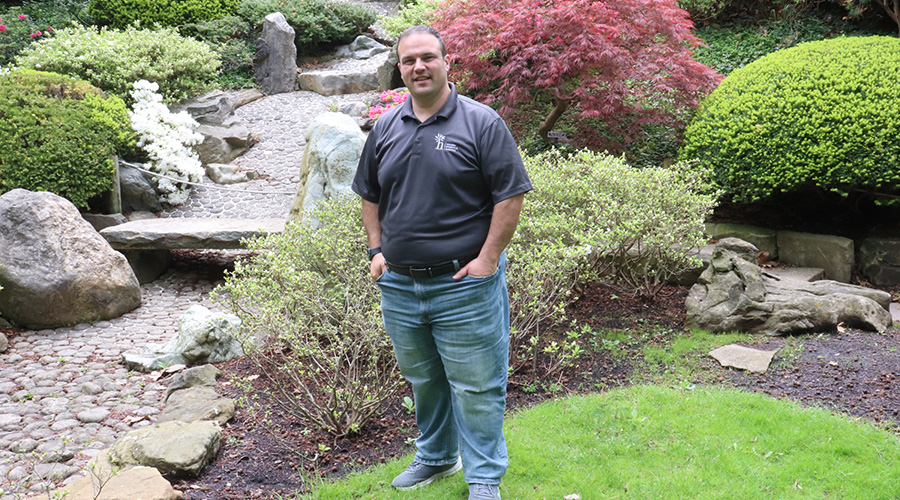How To Diagnose Facilities Management Staffing Issues
If your facilities management department has a fever, the only prescription is more collaboration. But first, diagnose the exact issue. Here's how.
If facility managers recognize even one of these symptoms in their departments, it is time to take immediate action and diagnose what is ailing the culture. The first step is to confirm the symptoms through fact-finding with staff, customers, and senior management.
An organization diagnosis cannot occur in a vacuum. To confirm any suspicious symptoms, it is essential to involve key stakeholders. The ultimate goal is to create a plan that addresses everyone’s concerns and that is acceptable to all. Individual and group interviews with staff provide opportunities to discuss complaints and problems, as long as there is the caveat that individuals come prepared with potential solutions to resolve their concerns. A checklist for staff is a valuable tool for staff to use prior to their interviews with facility managers.

Facility managers need to conduct focus groups with customers to engage them in developing a renewal plan for the organization. Their participation solidifies buy-in and future cooperation as the plan unfolds. Senior management input also needs to be incorporated in the assessment. They need to express their opinions about why the facility department is not functioning at peak performance.
Once information is collected from stakeholders, facility managers should summarize the findings, then outline and publish the characteristics of a healthy facility department going forward. These characteristics include resilience and agility throughout the organization: Facility managers, as well as staff, need the ability to spot and evaluate risks, then tackle them head on. Staff need to understand there are no punitive measures associated with risk-taking and with that understanding become more agile and flexible when the department or corporate direction changes.
Another key characteristic of a healthy organization is getting back to basics. Over time, staff roles and responsibilities, the department’s ability to forecast for the future, and the underlying value proposition of decision-making based on facts, becomes diluted. Because these basic organization tenets provide a solid framework for any healthy facility organization, they should be reaffirmed during the wellness planning.
It’s also essential to align goals and objectives. Establishing common cause goals for staff that not only meet the facility department’s objectives but also move staff’s personal goals along their career path, contributes to a healthy and strong facility department for the future. Goals and objectives should be realigned and communicated throughout the department.
A final characteristic of a healthy organization is renewal. The facility department’s staff assets and competencies need to be revisited to determine how they can be leveraged for high-impact service delivery. As part of the plan for becoming “well,” current staff capabilities need to be reinforced to bolster staff confidence in their worth and value to the company. Gaps in staff skills required for high-impact service delivery in the future also need to be identified.
Related Topics:

















